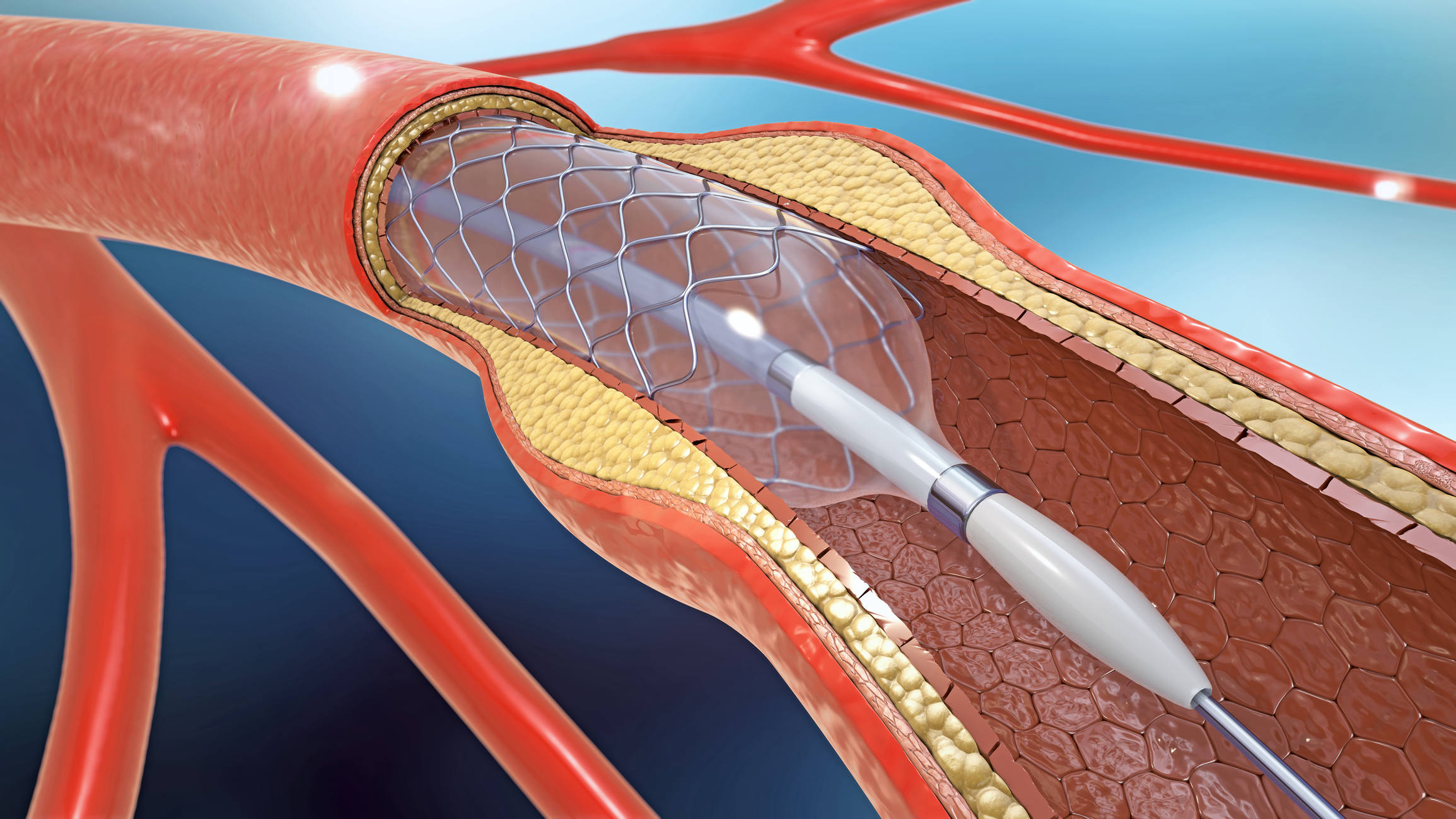Balloon Angioplasty
Balloon angioplasty is done in the catheterization laboratory (“cath lab”). The doctor injects a special dye through a small, thin tube called a catheter into your bloodstream. The dye allows the doctor to view your arteries on an X-ray monitor.
A device with a small balloon on its tip is then inserted through an artery in your leg or arm and threaded through the arteries until it reaches the narrowed area. The balloon is inflated to flatten the plaque against the wall of the artery, opening the artery and restoring blood flow. Then the balloon is deflated and removed from your body.
Benefits:
- The narrowing in the artery may be reduced, resulting in improved blood flow.
- Major complications are uncommon.
- You may be able to return to normal activities shortly after the procedure.
- The procedure is usually performed using local anesthesia, which involves fewer risks than general anesthesia.
Risks:
- The insertion site may bleed or become infected.
- The artery may become blocked again (restenosis).
- The artery may tear (artery dissection).
- The artery may develop a hole (artery perforation).
Balloon Angioplasty With Stenting
Your doctor may recommend placing a stent to reopen your blocked artery. A stent is a small, expandable, mesh-like tube that supports the artery and helps to keep it open. Implanting a stent does not require open surgery. The doctor inserts a catheter into an artery in your arm or leg, similar to the balloon angioplasty procedure.
A specially designed catheter delivers the stent to the narrow area in the artery. The stent is expanded, flattening the plaque against the artery wall and holding the artery open with a mesh tube. The catheter used to deliver the stent is then removed, but the stent stays in your artery permanently to maintain healthy blood flow.
Benefits:
- The stent scaffolds the artery open, improving blood flow.
- You are awake for the procedure; general anesthesia is not needed.
- The hospital stay is usually brief.
- You may be able to return to normal activities quickly.
Risks:
- The stent can occlude, causing reduced and/or no blood flow to the area.
- The insertion site may bleed or become infected.
- The artery may become blocked again (restenosis).
- The stent could puncture the artery (Artery Perforation)
Drug-Coated Balloon (DCB) Angioplasty
Drug-Coated Balloon (DCB) angioplasty is similar to plain old balloon angioplasty procedurally, but there is the addition of an antiproliferative medication coating the balloon, as well as an excipient to aid in drug transfer, which may help prevent restenosis. Restenosis is the re-narrowing of the vessel at a site that was previously treated. Using a drug-coated balloon has the potential to prohibit cell division, limiting the amount of restenosis, or blockage re-growth after treatment.
Angioplasty with a drug-coated balloon is done in a catheterization lab (“cath lab”). The doctor injects a special dye through a long, thin tube called a catheter into your bloodstream. The dye allows the doctor to view your arteries on an x-ray monitor.
A device with a small balloon on its tip is then inserted through an artery in your leg and is advanced through the arteries until it reaches the narrowed area. The balloon is inflated which flattens the plaque against the wall of the artery, opening the artery and restoring blood flow. Then the balloon is deflated and removed from the body.
Once that is complete, a new balloon, which is coated with an anti-proliferative medication, is inserted through the same artery in your leg and is advanced through the arteries until it reaches the previously treated narrowed area. The balloon is then inflated, and the medication on the balloon surface is delivered to the artery wall and surrounding tissue. After a designated period of time, your doctor will deflate the balloon and remove it from your body. They will then evaluate if any further treatment is necessary to maintain healthy blood flow through the area treated.
Benefits:
- Superior safety and effectiveness as compared to conventional plain old balloon angioplasty.
- The narrowing in the artery may be reduced, resulting in improved blood flow.
- Major complications are uncommon.
- You may be able to return to normal activities shortly after the procedure.
- The procedure is normally done under local anesthesia, which involves fewer risks than general anesthesia.
Risks:
- The insertion site may bleed or become infected.
- The balloon could tear the artery wall (Artery Dissection).
- The balloon could puncture the artery (Artery Perforation).
- The artery may become blocked again (Restenosis).
Rotablation
A special catheter is guided to the point of narrowing in the coronary artery. The tip spins around at a high speed and grinds away the plaque on the arterial walls. This process is repeated as needed to treat the blockage and improve blood flow. The microscopic particles are washed safely away in your bloodstream and filtered out by your liver and spleen.
Cutting Balloon
The cutting balloon catheter has a balloon tip with small blades. When the balloon is inflated, the blades are activated. The small blades score the plaque. Then, the balloon compresses the fatty matter into the arterial wall. This type of balloon may be used to treat the build-up of plaque within a previously placed stent (restenosis) or other types of blockages.
Schedule an Appointment
At Advanced Heart and Vein Center, we provide a variety of comprehensive therapies and interventional procedures for all cardiac conditions. To schedule an appointment, please call us at (720) 772-8040 or fill out the following form.

